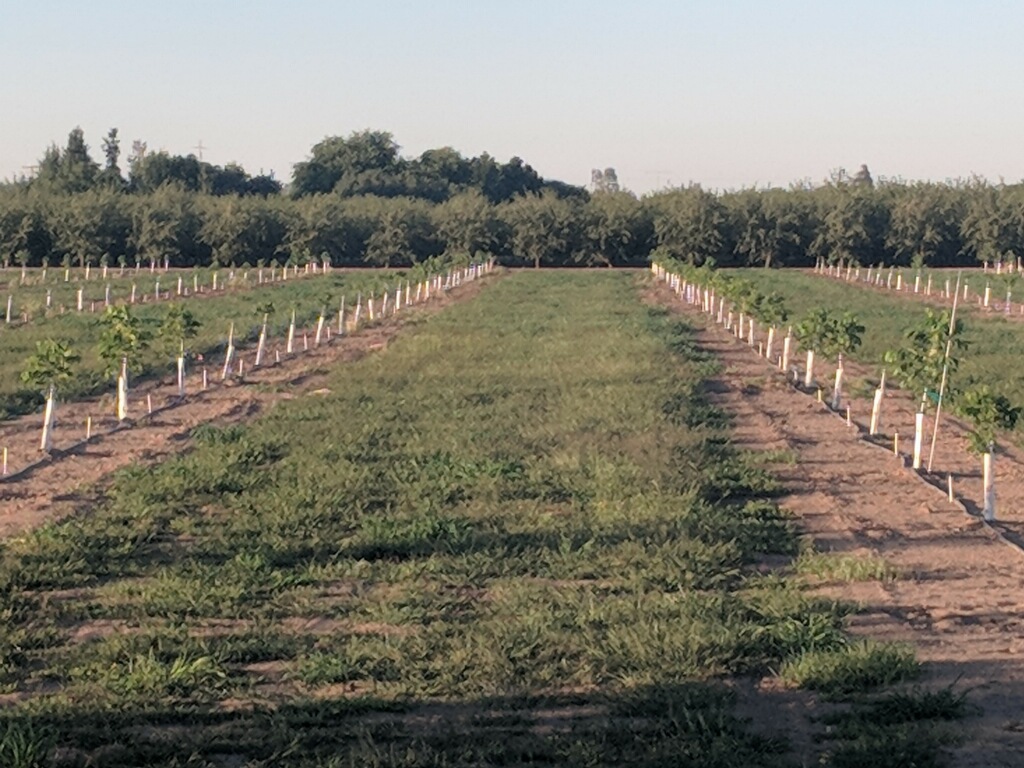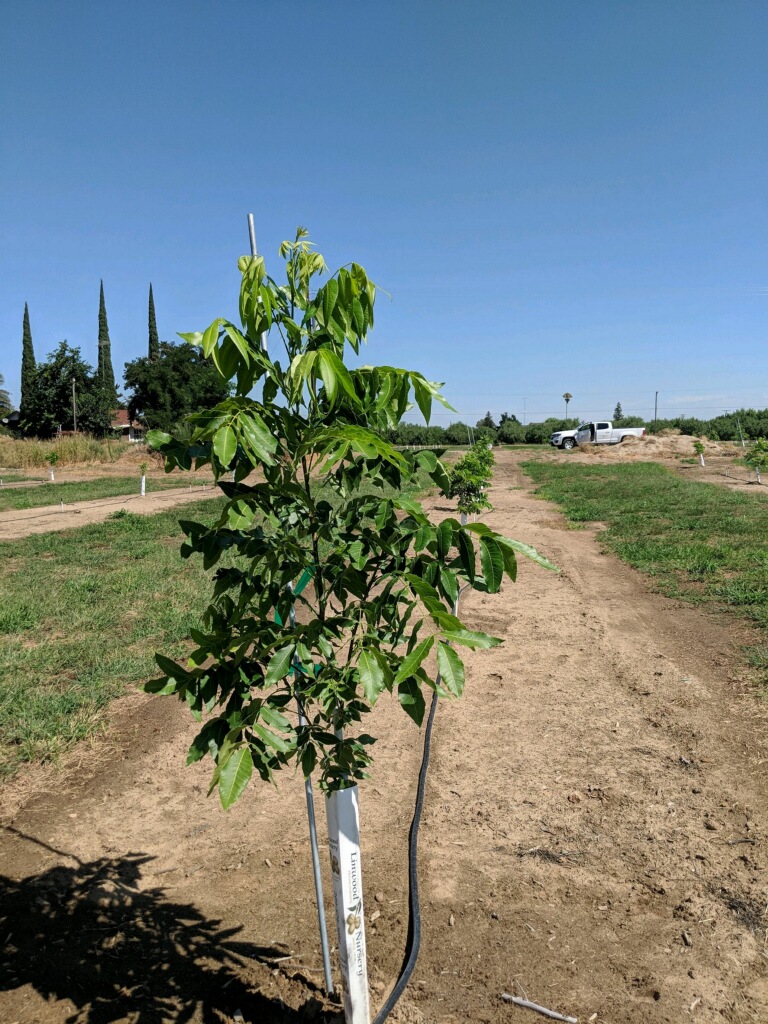
Water, weed and nutrition management for a newly planted pecan orchard is necessary to achieve long term production goals. Native pecan trees may tolerate a ‘river bottom’ environment, but improved varieties respond best to a balanced approach.
Young pecan trees can tolerate a lot of water, but Karlene Hanf of Linwood Nursery said water management that meets, not exceeds, tree needs will result in healthier more vigorous trees.
No matter what type of irrigation system is in place for the new orchard, soil moisture monitoring is necessary. One of the biggest mistakes made in new orchards is to irrigate on a schedule, regardless of need, Hanf said. When the bareroot pecan trees are planted, they receive a large slug of water and an initial irrigation. Most new pecan orchards are planted in February and March. Depending on soil type in the orchard, the trees may not need another irrigation for a month.
The new trees’ nutrition needs are best met with a blend of nutrients applied to each tree in a drench solution. Patrick Machado, Crop Advisor at Mid-Valley Ag Services, said compared to walnuts and almonds, there is still a lot to be learned about pecan nutrition. The first year should be focused on growing root mass, Machado said. That can be accomplished with phosphate and potassium. Pecans also have a high demand for zinc, but do not need a lot of nitrogen in the first year.

“Zinc is critical in pecans and some varieties need more than others,” Machado said. A minimum of a monthly application may be necessary and a leaf analysis in July will show if the trees are deficient.
Weed control in newly planted orchards is important, Hanf said. Weeds growing inside a four-foot radius around new trees will steal water and nutrients. The wide spacing in orchards does allow space for planting a cover crop in the first few years of an orchard’s life, but Hanf said consideration must be given to the type of cover crop. Legume crops are good for the first couple of years.
Micro sprinklers and cover crops can invite vertebrate pests into a newly planted orchard. Hanf said that gophers prefer pecan tree roots to many other food sources and can easily kill new trees by feeding. If signs of gopher infestation are found, an ongoing gopher eradication program should be implemented.
Good quality trees, proper irrigation, balanced nutrients, and weed and vertebrate pest control will lead to a healthy start for your new pecan planting.

Cecilia Parsons
Cecilia Parsons has spent the past 30 years covering agriculture in California for a variety of newspapers, magazines and organizations. During that time she has been fortunate to witness some of the important events that have shaped this diverse industry and worked hard to examine and explain these events for readers.
When Cecilia first moved to the San Joaquin Valley in 1976, her first journalism job was at a small daily newspaper where she covered “farm news.” From there she branched out to writing for a dairy magazine and a regional weekly agriculture publication.
Cecilia is part of a farming family from the rural community of Ducor where she also raises purebred sheep and is attempting to master versatility ranch horse riding.











